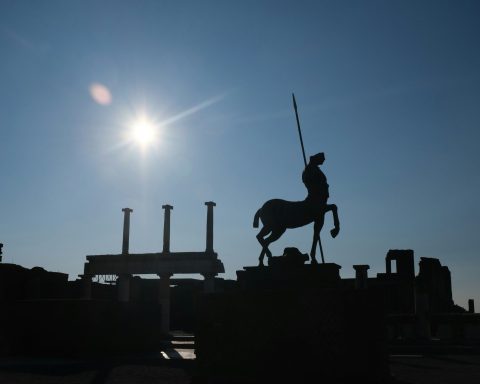Andrew Papanikitas, Emma McKenzie-Edwards, Rachel Starer, Ruth Wilson, Sharon Dixon, Suzanne Stewart, and Helen Salisbury. The authors are all GP educators in Oxford and its environs, affiliated to the Nuffield department of primary care health sciences at the university of Oxford.
A recent feature of the British Christmas TV scheduling is the animated adaptation of children’s books by Julia Donaldson and Axel Scheffler. A couple of winters ago a GP discussion group used this creative duo’s work as trigger-narratives for professional reflection.
What we did
Two years ago, before the coronavirus limited our sociability, our informal GP ethics group devised an exercise where each person read and then reflected on a nursery story. We each spent five minutes looking at our chosen story, then summarised it and related the ‘moral’ to our practice and professional life. We hoped that the ensuing discussion would generate useful reflections – nursery stories and fairy tales are suited to this exercise because they can be looked at in a couple of minutes leaving time for discussion. They also often have an explicit (or very clearly implicit) moral as the frame for the story.
For the purpose of standardisation, we chose nursery stories aimed at a similar age range by the same authors. Story books by Julia Donaldson and Axel Scheffler were ideal because they are readable within 5-10 minutes (for an adult), beautifully illustrated, and contain morals and themes that translated into our professional lives. We considered that some of the GPs already being familiar with them (e.g. as parents) would not be a disadvantage – it would facilitate a summary and discussion.
We put the books in an opaque bag and members of the group chose them at random. Mindful of our professional duties, we adopted a Chatham house rule of anonymity for any experiences we discussed.1
The books we discussed, in the order they were drawn from the bag
The smartest giant in town: a giant buys smart clothes and then gives items away one by one to animals whom he feels have a greater need. He is ultimately forced to retrieve his old shabby clothes, whereupon all the animals he has helped thank him with a card and a paper crown.
We reflected: this story is about appreciation and validation of a kind person who gives his all. However, kindness can reach a point where you are sacrificing your needs to service others. The giant chose to make himself smart and clearly enjoyed being smart but there comes a point in the story where something tips the balance and he goes from being the smartest giant to being the coldest giant (he no longer has a belt to hold up his trousers).
We compared this persistence in a failing strategy with the closed questions asked by doctors and medical students.
Monkey puzzle: a little monkey is looking for his mother. He describes her to a friendly butterfly one attribute at a time and each time the butterfly finds an animal with that attribute but who is not the monkey’s mother.
We reflected: we discussed differences between people that lead to one failing to understand the other. As a group we felt some anxiety for the baby monkey and irritation that the butterfly was so slow to understand that the mother monkey looked like her baby. We compared this persistence in a failing strategy with the closed questions asked by doctors and medical students which may overlook the meaning of illness for the patient.
The Snail and the Whale: a little snail ignores his compatriots urging to stay on his small, black rock and hitches a ride around the world on the tail of a whale. When the whale is beached, he saves the day by summoning help.
We reflected: we discussed how we are vulnerable and small. Here the tiny creature accompanies and then saves his large friend. We discussed resistance to the norm – all the other snails on the rock tell the protagonist to stay where he is and get used to being a snail on a rock, but he wants to see the world. Though it makes him feel small, it is a positive experience. We discussed rising above one’s own situation and the risk of not considering the wider picture when focusing on our jobs.
The highway rat: This rat is an armed robber who steals all the other animals’ food, regardless of whether he really wants or needs it. A clever duck uses the rat’s own greed to trick him into a cave. When he finally emerges, he has reformed and goes to work sweeping the floor of a cake shop.
We reflected: we discussed experiences of meanness and cruelty from people in positions of power. Some of the group questioned the status of rat (as opposed to any other kind of animal) as villain – this spoke to ideas of prejudice. We discussed those who take without contributing or who demand without consideration for others.
The Gruffalo: a mouse persuades all the animals in the forest not to eat him by saying he is visiting a monster called the Gruffalo. When he finally meets the Gruffalo he persuades the beast not to eat him by convincing him that all the animals fear him (the mouse).
We reflected: some felt that the mouse shows chutzpah in the tradition of many narratives which feature cunning or the ability to deceive convincingly as a hero’s attribute (from Odysseus to Sherlock Holmes). Others felt it was a perverse moral, that if one can lie with enough confidence then one can elicit respect from more powerful animals. We also noted the need to be wary of strategic alliances with the biggest predator because it may still wish to eat you when all is done.
… the need to be wary of strategic alliances with the biggest predator because it may still wish to eat you.
We reflected: themes we discussed included a princess growing up and wishing to be a doctor and in parallel the dragons learning how to become dragons and growing into their identity. Zog is very keen to please and win a star by mastering a dragon skill. ‘Now that you’ve been shown you can practice on your own…’ was reminiscent of ‘See one, do one, teach one’ which we remembered from medical school. He only succeeds when a princess actively consents to being kidnapped, which mirrors our own practice where patient involvement is crucial for success.
Stick Man: Whilst out for a jog, stick man is taken ‘as a useful stick’ by a dog and then a number of children and a dad, getting further and further away from his home and family, until he rescues and assists Santa Claus, who takes him home.
We reflected: we discussed the idea of powerlessness and moral agency. Much of our life is out of our control. The stick man almost never gives up trying to get home despite being thwarted by more powerful characters who only see his particular usefulness. He exercises his moral agency to help someone else at the first opportunity (also the first character to request help rather than take it by force). Persistence in trying to do the right thing, even when we feel we lack the power to change outcomes, is important in our work.
Persistence in trying to do the right thing, even when we feel we lack the power to change outcomes, is important.
We felt that this exercise might be varied, with people bringing their favourite stories, or mixing different authors in an unseen assortment. We discussed whether such an exercise might offer an entry point into reflective practice for professionals who are parents of young children, and whether the exercise might accompany a ‘Storytime-style’ playdate where children hear the story and then have opportunity to take part in an activity while the parents have a chance to take part in a discussion.
All of us had stories that had meant something to us that we would have liked to share. We also discussed stories that members of the group would have liked to bring and discuss. We discussed the artifice of telling a story and how a moral is often the skeleton on which to hang a story – without a moral there is no story.
We subsequently presented our ‘method’ at two academic conferences. The following year, we repeated the exercise, this time with Christmas television commercials. But that is another story…
1. https://www.chathamhouse.org/about-us/chatham-house-rule accessed 08/12/21
Featured image by Dmitry Ratushny at Unsplash








